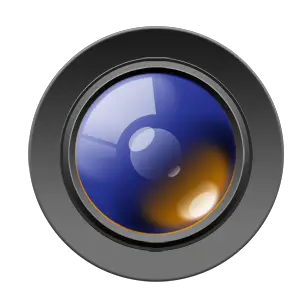L. Image editing | Nikon D5100 guide
On this page: Image editing in the D5100. How to access the in-camera post-processing of photos and what you can do with your photos there.
In the D5100, image editing is possible to a limited extent compared to your computer. Here I will only write a brief explanation of the individual functions, as I assume that editing in the camera is rather an exception. Moreover, the functions of image editing are more accessible by trying them out than by reading a description.
On the other hand, the results of the built-in image processing are quite neat. Try it out if you like it or if you want to quickly crop an image while on the move.
How to use image editing
Starting image editing | Two options:

- You start in the playback of your pictures. When an entire photo is displayed, the OK button takes you to the image editing menu. You can then choose how you want to edit the image.

- Alternatively, you can start in the retouch menu and first select an editing function. Then the D5100 will ask you to pick an image for it.
Saving edited images | An edited image is saved like a new image, i.e. with a new incremented number in the file name. You will not be able to tell from the file name which photos have been edited, nor will you be able to match up the original and edited photos.
However, if you sort the photos in an photo editing software on your computer according to the date and time they were taken, the originals and edits will appear together.
When viewed on the camera monitor, an icon at the top that looks like a small brush on a canvas shows that it is an edited image.
Comparing images | In the D5100, you can call up an original image and all its edited variants one after the other.
The menu is only available if you call up the image processing menu with the OK button while there is an image on the monitor for which processed variants or an unprocessed original exist. You will then see this menu item and can browse through the related images.
The individual functions of image editing
D-Lighting | Improve dark areas of the image by brightening and increasing contrast.
Red-eye correction | Automatic detection and correction of red eyes that can occur when taking pictures with flash.
Trim | Crop an image, allowing only specific aspect ratios and increments.
Monochrome | Create a black and white or monochrome copy tinted in sepia or blue.
Filter effects | Simulates various filters for colour manipulation and special effects.
Color balance | Fine-tunes colour reproduction − warmer/cooler colours and more/less green.
Image overlay | Superimposing two images in NEF format.
NEF/RAW image processing | Re-development of NEF files to images in JPG format with the possibility of selecting some settings from the shooting menu differently, e.g. other Picture Control with colour saturation, contrast etc.
Resize | Creates scaled down images with lower resolution. First select the size in pixels in the second menu item, then select the image to be reduced.
Specifying a file size is inaccurate and misleading, you will get reduced images with the selected pixel size and the same JPG compression as the original. The file size may differ from the one displayed.
Quick retouch | Simplified change of contrast, saturation and D-Lighting in one step.
Straighten | Slightly rotate to straighten images.
Distortion control | Corrects distortion errors of the lens.
Fisheye | Creates a distorted image reminiscent of extreme wide-angle shots.
Color outline | Creates a black and white image that looks like a drawing, showing only outlines of all parts of the image.
Color sketch | Creates an image with black outlines and coloured areas that look like like a painting.
Perspective control | Allows trapezoidal distortions to align parallel lines running towards each other in the image.
Miniature effect | Makes the image blurred except for a narrow strip.
Selective color | Converts a picture into black and white except for one selected colour.
Trim movie | Allows you to trim a film or save a single frame of a film as a separate image file.
This function is only available when you enter the image editing menu with the menu key. You can then select an existing film and start the actual editing.


